Field Test: Minelab CTX-3030 Metal Detector Review
Published by Jenna Anderson on 08/06/19
Each detector has its own personality. As I continue to learn about the Minelab CTX-3030 I am aware that the detector imparts a certain attitude to the treasure hunter. As I detected a few North East Florida Beaches during Tropical Storm Beryl. The Minelab CTX-3030 performed seamlessly despite the challenging weather. From wind to rain to getting hit by a few high waves the Minelab CTX-3030 has a “can do… go anywhere” attitude. When a hurricane or storm hits the coast I like to hit between three to five beaches, so I can better focus in on a high potential erosion event.
After hitting a few tourist beaches I settled on one particular beach where the waves had pushed targets up trapping them in the rocks. The weather front from Storm Beryl was pushing the waves high up on the beach, so I had to concentrate on the higher part of the beach as it was too dangerous to chance getting caught between the rocks and the occasional odd wave that would push up high.
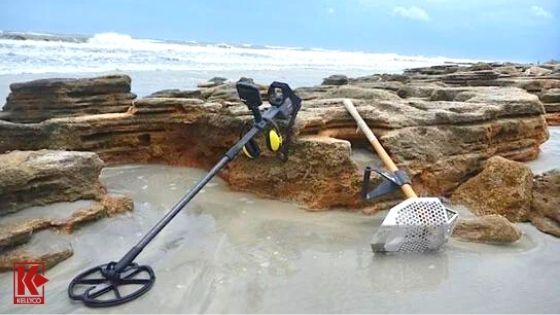
Minelab CTX-3030
I immediately began finding coins, but most were clad pennies. I did not want to spend valuable time chasing pennies, so I quickly blocked them out with two taps of the reject button. Now, I could concentrate on finds of greater potential and I quickly moved on from one rock sand trap to another. I then realized that the screen display of the Minelab CTX-3030 is like getting a second opinion on a target.
At this point I can pick out the nickel signals by ear, but if I want a second opinion I look at the screen and confirm the signal. I was digging a good portion of aluminum shards. A while back I had taken a bit of can slaw and rejected it with the smallest reject size available. This works perfectly as a marker in that aluminum tends to vary in signal conductivity especially if it is old or worn. However, it does not vary much! My little reject box on my display served as a reference point and all the shards of aluminum I hit were close to this area. This gave me a great deal of information that I was likely detecting an piece of aluminum.
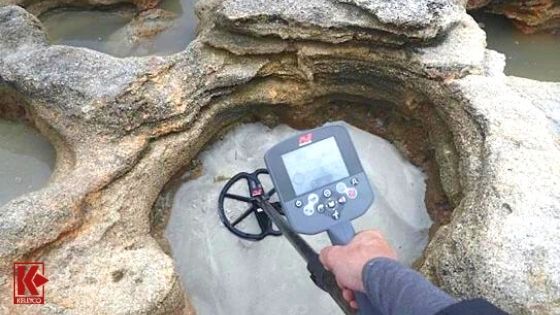
Smartfind 2 Display
The great thing about using the small size reject box is that it helps you mark the ferrous conductive coordinates on the Smartfind 2 display, so that you can spot trends. But with the small reject box you still have the signal displaying with the reject cursor, thus giving you the option to dig or not dig. I have found this is a great way of learning where various targets appear on the display.
As I detected the 11th sand pocket, I noticed it almost looked like a natural sitting bench carved out of the Coquina rock by the waves. As I ran the coil over the sand, the Target Trace showed two targets. With the first flip of the scoop I saw a flash of gold as a ring rolled away underneath the overhang of the rock. I quickly ducked down fearing the waves would come in and take it away. Luckily I could feel the heaviness of the class ring in my hand before the waves came rolling over the rocks. I quickly secured it in my pouch telling myself…”there’s time to look at it later”.
Like a soldier in combat I was back on the mission and now the Minelab CTX-3030 had locked onto the second target. This was a bit more difficult in that I was hitting the rock bottom, a good eight inches under my scoop. I finally stuck my hand in the water logged sand feeling around when my pinky finger went through another ring, a men’s gold wedding band. I wonder how both rings had been lost in the same spot? Perhaps coincidence or maybe someone was sitting on the natural ledge and the rings fell out of a pocket.
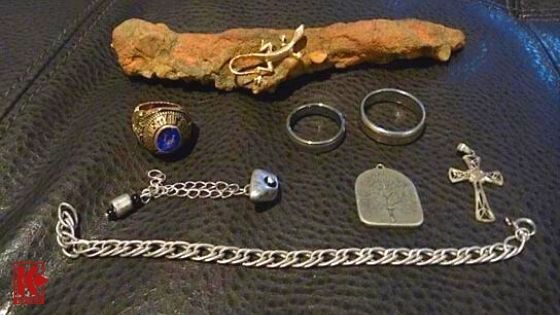
Four Rings And A Silver Bracelet
As I walked off the beach with four rings and a silver bracelet in my pocket I thought about the Minelab CTX-3030. In learning how to operate a new detector, one spends time focusing on what each function does, as well as what and how to change settings on the fly. However, during this hunt I realized I had not really thought about the machine at all. It had performed seamlessly and intuitively without regard to what the weather was presenting. I now realized the limiting factor will never be my detector. The Minelab CTX-3030 has a can do, confident attitude and this attitude was spilling over to the way I detect and to how effectively I used my time. The Dutch have a saying…”there is no bad weather… only poor choices in clothing”.
Today I definitely took heed of the storm’s fury… my Minelab CTX-3030, however did not seem to notice.
By Randy Horton, AKA Digger

“Hunting by ear” enables me to maximize my time in the field. On the Explorer or E-Trac, I can assign a single tone, two tones, four tones or multiple tones as a response to either conductive or ferrous based targets. If I am hunting in Two Tone Ferrous (TTF) on my E-Trac, targets with a ferrous value equal to or less than 17 will produce a high tone. A low tone will be produced on targets with a ferrous value greater than 17. These ferrous parameters (1-17, 18-35) are established within the software, with no option for the user to change them. Others who enjoy hunting in TTF may have discovered that some “good targets” can provide a ferrous reading larger than the “break point” of 17. To make sure you don’t pass those targets up, you either have to stop and look at the display on all target responses.
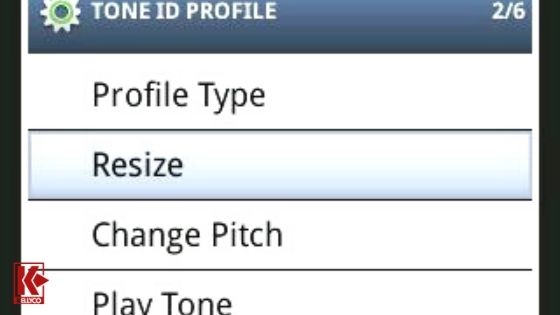
Ability To Adjust Both Ferrous And Conductive Parameters
The Minelab CTX-3030 allows the user to hear an audio response based on either the ferrous or conductive properties of the target. It also offers the choice of hearing a single tone for all targets, two tones, four tones or multiple tones. (Multiple tone = 35 ferrous or 50 conductive) In addition, the Minelab CTX-3030 user also has the ability to adjust both ferrous and conductive parameters by “resizing” each target group. This is done via simple programming in the Tone ID Profile.
In the following picture, I have changed the ferrous “break point” (from line 17) to ferrous line 23, in a TTF program.
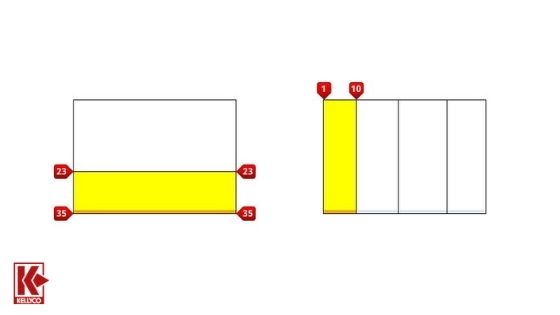
4 Tone Conductive
The same mapping flexibility applies to conductive audio tones in that I can map the conductive “break points” to any conductive value(s) I desire. The following picture is a screen shot of 4 tone conductive. Notice that I set the third “bin” to represent targets with conductive values of 24 – 38. And, it will provide an audio response of 660 Hz, a medium-high tone.
In addition to mapping the parameters for each target group, I can change the pitch of the audio response for each of them. I also have the ability to play any or all of the tones.
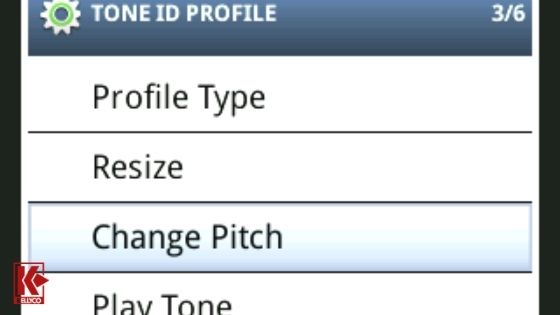
Pitch Of The Audio Response
Mapping individual screen segments and assigning a preferred audio response to each map segment has greatly enhanced my ability to “hunt by ear”. But in addition to ferrous/conductive one tone, two tones, four tones and multiple tones, the Minelab CTX-3030 offers yet another audio response option called “Combined”. Combined allows the user to hear a combination of both ferrous and conductive tones. And just as in the examples mentioned above, we have the ability to map each of the target segments. That information will be covered in my next Treasure Talk blog “Combined Audio – The best of both worlds”.
Minelab CTX-3030
This is Minelab’s highest performing all-around metal detector. It can find objects in every type of soil, including mineralized ground where gold is found. This machine has five preset search modes and is also fully customizable for more advanced detectorists. This detector works in any terrain, including the ocean and wet beach sand.
Our customers say that this detector is heavy but well-balanced. If you plan on using this for an extended period of time, a harness is available to help relieve some of the strain.
- Weight: 5.20 pounds
- Frequency: 1.5 kHz – 100 kHz
- Waterproof: Up to 10 feet
- Warranty: Three-year limited
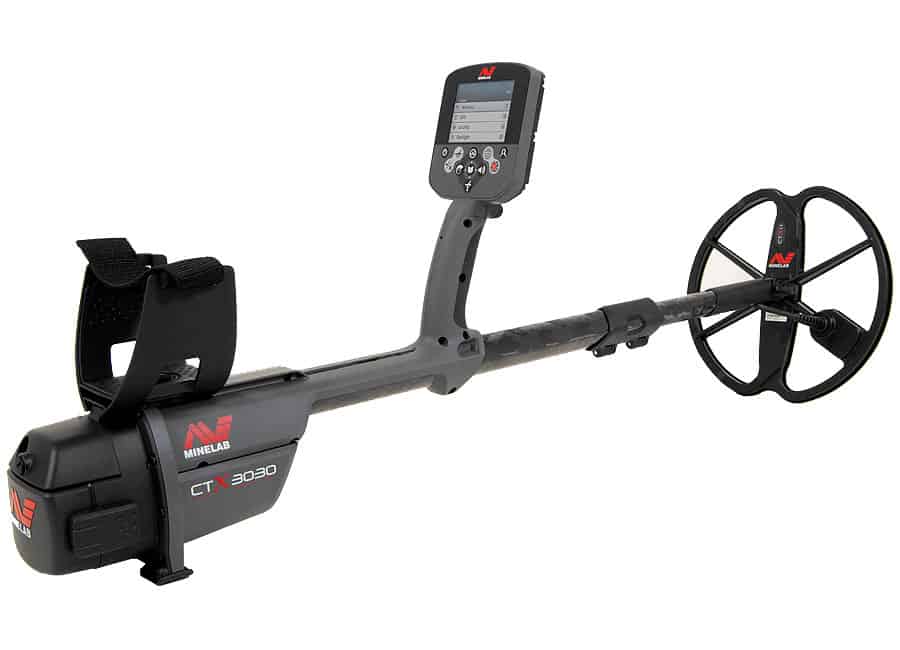
- Programmable to fit your needs
- Most accurate target identification on the market
- GPS to track your finds
- It is heavy — over 5 pounds
- Higher price point
- Slower processor than newer detectors on the market
- “I had the pleasure of calling and talking to Kellyco … looking to upgrade... I was looking for the best land and best water machine. Your rep explained all of the differences and highly recommended the CTX-3030. One machine for both. Why buy two different machines when one detector does both? It has been the best buy I have ever made. It took a little bit to get used to the sounds but I have absolutely no regrets. Great for the days that I want to hunt both land and water. Thank you very much for the recommendation.” - Paul
